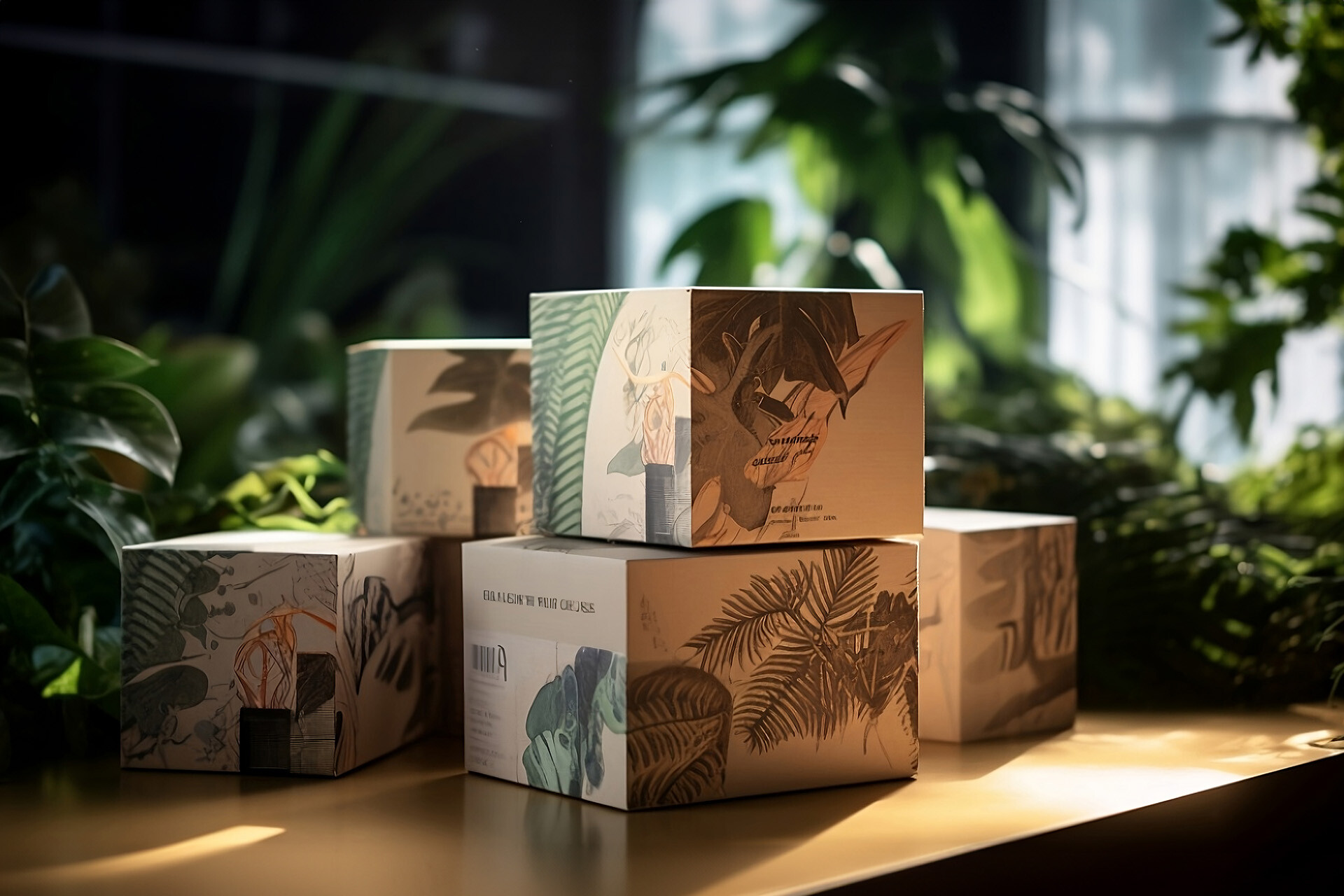03 - 11 - 2023
All about sustainable packaging

A hot and cross-cutting theme across many markets is that of packaging. Here's how companies are gearing up to reduce its emissions. Creating increasingly sustainable packaging is a global imperative: reducing CO2 emissions is necessary to prevent a climate catastrophe. Not only that, but it's what the 196 signatory countries of the Paris Agreement are loudly demanding. The maximum limit of CO2 emissions set for 2025 to keep global warming within 1.5 degrees Celsius is far from being reached. Moreover, the reduction of 43 percent in CO2 emissions by 2030, based on current predictions, is destined to increase. If we were to reach a temperature increase of 3 degrees Celsius compared to the pre-industrial era, the implications for the planet would be catastrophic: coral reefs and glaciers would disappear, and millions of people on Earth would find themselves in the condition of climate migrants. And all of this depends on packaging? Not only that: packaging, however, has a significant role in a world where purchases are increasingly digital, and shipments are commonplace. But there's more: committing to environmentally responsible packaging is also a business opportunity.
Sustainable Packaging: Challenges and Opportunities
With the increase in disasters linked to climate change, governments will move to introduce additional laws aimed at reducing carbon emissions caused by packaging, putting pressure on manufacturers. The advantage of being an early adopter is the ability to create a compelling narrative for environmentally conscious consumers, building credibility and leadership over time. Another motivation for packaging manufacturers to change course, in addition to the strong one linked to the survival of the planet, is the potential increase in revenue. The consulting firm McKinsey has conducted research in the United States, showing that in the last five years, ESG statements (communication of data regarding companies' operations in environmental, social, and governance areas) have led to significant revenue growth in many cases. Products declared "carbon neutral" have grown by 8.5 percent more than equivalent competitors. But while the purchase of some products is necessary, that of packaging is entirely unnecessary unless there is a need for shipping. That's why, to convince more environmentally conscious consumers, it's necessary to demonstrate commitment by eliminating unnecessary elements and optimizing those that remain, for example, by designing them to be reusable.
Reusable Packaging
Do you recall the photos of pantries in country houses? With many glass jars containing various foods? Well, this basic principle of reuse, which any of our grandmothers would rightly have dismissed as banality, is now a winning marketing strategy. We are witnessing a shift towards reuse models where consumers first purchase a package they find desirable and then keep it by simply refilling the product inside. This allows for larger packages and packaging to be bought once and for all, and then creates slimmer and less carbon-intensive packaging for the product with which to refill.
For example, the British gin brand 6 O'Clock estimated that refilling its iconic blue bottle with gin, rather than buying a new one each time, reduces packaging emissions by 94.4 percent, generating only 46 grams of CO2 for 700 ml of product instead of 812. TwistMist, which won the Sustainable Packaging Innovation Award in 2023, is the world's first aerosol spray without propellant gas, rechargeable up to 30 times, with a 90 percent lower CO2 footprint compared to traditional aerosol cans containing liquid propellant gas.

Paper Queen
As of January 14, 2022, regulations against single-use plastics officially came into effect in Italy, adopting the European Community directive SUP (single-use plastics) 2019/904. This directive prohibits the sale of plastic cutlery, plates, straws, and other plastic products. The list also includes cotton swabs, beverage stirrers, balloon sticks, specific food containers, and all those for beverages in expanded polystyrene. It is not certain that more plastic bans will not be issued in the future. Therefore, there are many good reasons to eliminate plastic from packaging and switch to paper, a material that is increasingly gaining prominence in the packaging sector.
In terms of emission reduction, paper and cardboard far surpass plastic, with a very convincing figure: only 0.94 kg of CO2/kg compared to 3.5 kg of CO2/kg for plastic products. Additionally, paper is one of the most recycled packaging materials globally, while only 9 percent of plastic packaging is recycled. Moreover, while paper can be recycled multiple times, up to seven, the plastic cycle stops at two. Not to mention that paper biodegrades more easily, while plastic can remain on this planet for up to 500 years after being discarded, particularly polluting our oceans. According to data from WWF, every year, 8 million tons of plastic waste end up in our oceans, directly threatening 700 marine species.
Returning to the United Kingdom, Sainsbury's supermarket has replaced plastic bottles with recyclable cardboard, which not only has a lower carbon footprint but is also 35 percent lighter, reducing road traffic by 13 trucks each year. The brand estimates that it has thus reduced its carbon footprint by 50 percent and prevented 22 tons of single-use plastic waste from reaching landfills. On the other hand, our client Dorabruschi (discover the case study here) has not only adopted paper packaging but has also taken an additional step towards product transparency with a graphic solution that facilitates consumer reading.
- Strategy
- Branding
- Digital
- Content
View Project

